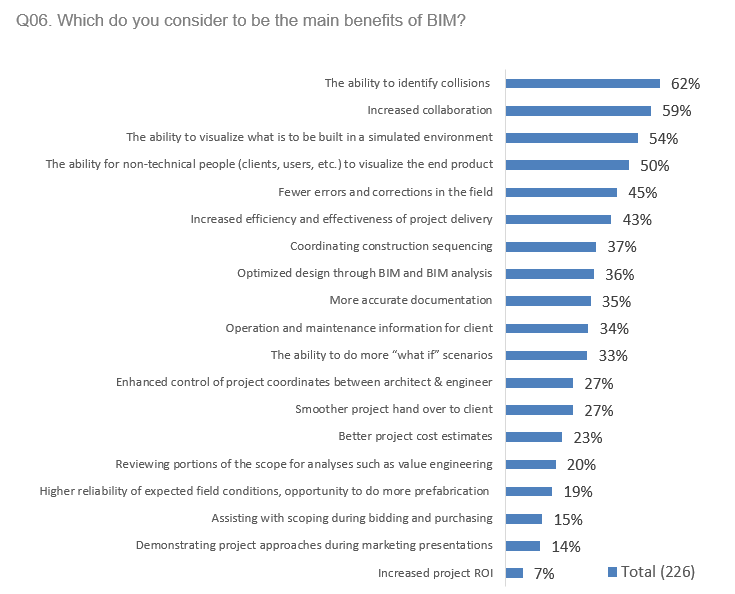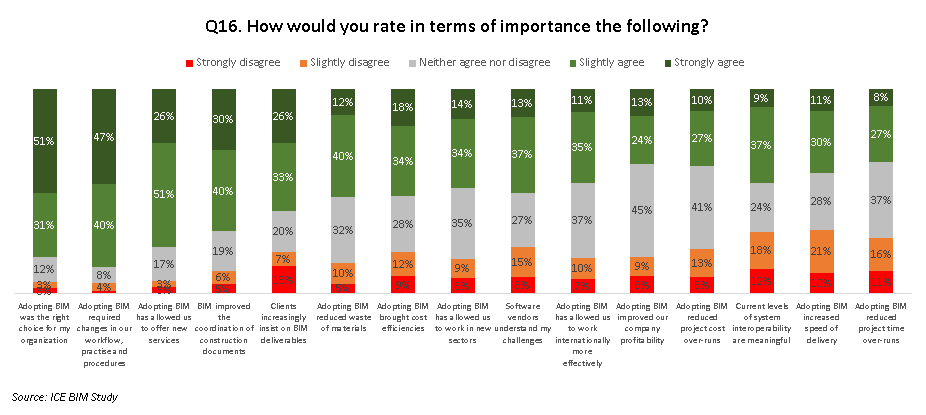Building information modeling (BIM) is more than just the latest industry buzzword, it is the key to creating better quality projects more efficiently and cost-effectively. A recent study1 by the UK Institute of Civil Engineers (ICE)2 showed that many civil engineers (82%) believed adopting BIM has been a wise decision, and close to half felt it had delivered the expected increases to profitability (35%) and delivery speed (41%), as well as reducing cost overruns (37%). However, can civil engineers further leverage the capabilities of BIM to add even more value to the industry?
The Relevance And Benefits Of BIM For Civil Engineers
In order to be profitable, civil engineers need to remove as much risk as possible from their projects by eliminating errors and inefficiencies in the design process. The ICE BIM Survey showed that incomplete data from other design parties and design changes are the biggest source of errors during design according to BIM experts (at 73% and 55% respectively,) closely followed by exchanging information between parties (45%) and incompatible software (43%). The beauty of BIM is that it can help address all of these issues – here’s how.
Incomplete Data
Increased collaboration is often cited as one of the main benefits of BIM. Part of this increase is due to having access to all the necessary information from all parties, which, using the traditional design method, currently exists across a multitude of documents held by various team members. When designing using BIM-capable software, all the information about a project – including specification and performance data – is saved within (or linked to) the BIM model. This creates a single source of up-to-date project information and eliminates the traditional “saw-tooth effect” where information is lost at every handover during the design stage, making it easier for teams to collaborate.
Information Exchange
Collaboration is also simpler if information can be shared effortlessly amongst the project team. Often, project information is shared using different civil engineering design software, causing problems with data being incompatible or lost. Using BIM software with information exchange interfaces, such as Industry Foundation Classes (IFC), lets different programs share information with optimal data retention.
Design Changes
Updating all the different design documents – such as specifications, drawings, and schedules – to reflect the new design is error-prone and time-consuming. BIM software drastically reduces the time taken to implement design changes by automatically updating all drawings and schedules. Collisions or clashes between model components can be quickly identified using built-in tools, which is another a major benefit of BIM software. As a result, BIM helps ensure more accurate documentation.
Short Timescales
The inherent inefficiencies of traditional 2D design processes – such as manual design changes, calculations, and checks, or chasing missing information – are removed when using the BIM methodology. Advanced 3D modeling BIM software offers automation opportunities, such as auto-generating a bill of quantities from the 3D model that is easily updated as the design changes. This significantly increases the efficiency and effectiveness of project delivery, another substantial benefit of BIM.
BIM For Civil Engineers
The study shows that while many civil engineers are realizing the full benefits of implementing BIM, there are still some barriers for others, who are unclear about what BIM offers and how to implement it within their organization. While training costs and the associated culture change are big hurdles, the investment soon pays off in terms of more efficient project delivery. As BIM continues to evolve and organizations become more comfortable working with 3D deliverables and digital working methods, the proportion of civil engineers who are seeing the predicted benefits of BIM will increase considerably.
If you want to learn more about how to increase the efficiency of your civil engineering project delivery, download our white paper to see how a civil engineering consultancy increased their design productivity by 30-35% using BIM and advanced 3D modeling software.
Source:
1 https://www.ice.org.uk/news-and-insight/the-civil-engineer/may-2019/breaking-barriers-in-bim










